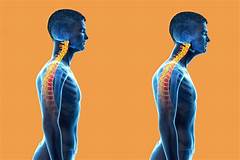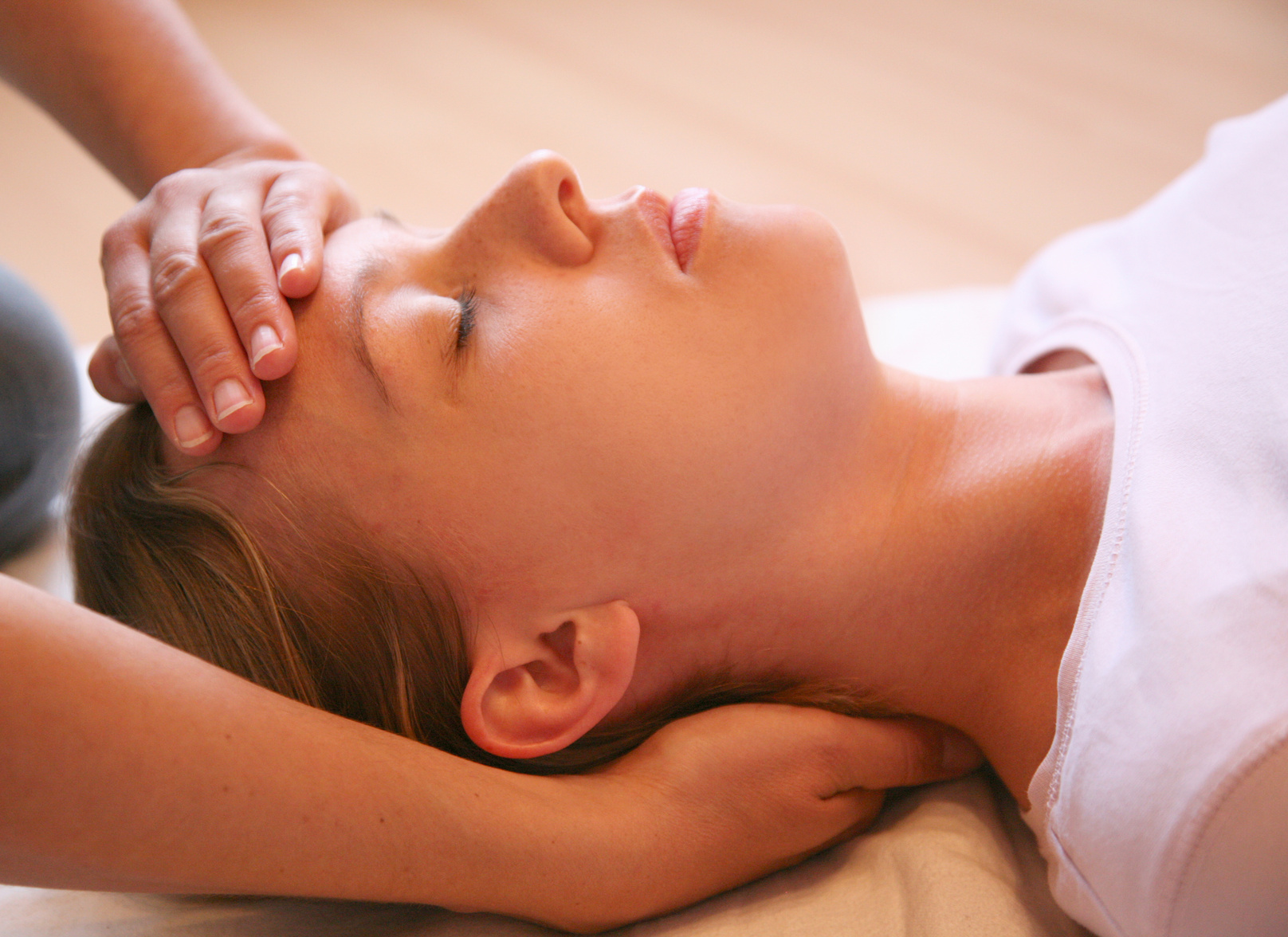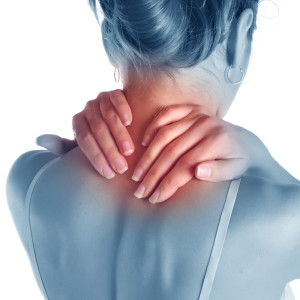
by SharonHartnett | Mar 27, 2024 | concussion, craniosacral, Craniosacral Therapy, healing, Massage License in Ohio: 33.007505-H-K, mind body & spirit, Structural Integration
Young people and older people are getting forward neck posture. All the computers and the cell phones contribute greatly. But also all the sitting Americans do. It’s not good. If I had to do it again, I’d start squatting and learn yoga or pilates early on. I’d make them a life practice. But life being what it is in our culture- our postures are often misaligned as we get older. But there are things we can do to have more freedom of motion.
In my opinion, massage can help. But someone who specializes in fascia is the best bet. The fascia wraps around and through everything in the body superficially to the deep. From macro to micro and reversed. It’s a living tissue that contains and keeps us alive and in motion. When we nourish the fascia and help it remember its ability to be vital, pain can disappear.
I have clients in their 50’s and on up. They can hardly move their necks when they first come in. They are told it is arthritis. Well, they may have arthritis, but it’s the tissues that restrict or allow motion. It’s the fluids dancing with the structure that makes the change. If things can start to soften, spread and move, the bones can be adjusted or perhaps move back on their own. It’s like a wrapping. If it’s tight and stiff- how does life nourish or relinquish what it no longer needs?
Of course there are minerals, vitamins, PT and other things which can help (all part of the HELP team), but the fascia is key. People, whose doctors tell them it’s arthritis often don’t talk about the benefits of fascial work. I think this is a big mistake not including it in health protocols. In addition, learning Feldenkrais, Continuum and other movement exercises that are gentle can be essential and really help too. People don’t have to stay stuck or frozen internally. At any age, we can make choices that will help us. It may not correct the issue 100%, but it can make a huge difference.
Friends, move yourself in different ways. Be proactive with your health. We all have habits that aren’t easy to break, and when this happens- there is always someone out there with skill and experience who is willing to help. It may take time and patience. Take care-no matter which route you take.
Sharon Hartnett CST-D
7035091792
www.craniosacraltherapistcolumbus.com
by SharonHartnett | Jan 4, 2018 | better posture, concussion, craniosacral, fibromyalgia, mind body & spirit, Structural Integration, upledger institute
Open for Craniosacral Therapy Worthington
Sharon Hartnett CST-D (Craniosacral Therapist Diplomate through the Upledger Institute.)
703 509-1792
My new hours for this location: 6463 Proprietors Rd. Suite 103 Worthington, Ohio are Thursdays 11am-6pm.
I am so excited to be going into the city once a week to serve my clients. Recently, a great opportunity arose where one of my friends who has a beautiful office, let me know that she is willing to share with me. So for all my clients driving out to Johnstown- this is your opportunity to schedule a time closer by, with less driving. For those of you who are currently looking for a Craniosacral Therapist in the Worthington area, here is your chance! Craniosacral Therapy Worthington- here we come!
To Celebrate: I am offering a discounted rate for new clients at $75.00 for an hour during the month of January.

Craniosacral Therapist
A bit about Craniosacral Therapy Worthington…
Craniosacral Therapy is great for most everyone. This work is so gentle and yet profound. The focus is on working with the rhythm of the craniosacral system to look for and release restrictions that negatively impact the Central Nervous System. What I find the best results with are: trauma-releasing emotional blocks, back and neck pain, fibromyalgia, headaches, migraines, concussions and basically for decreasing stress. But I also have clients who enjoy experiencing more balance, vitality and overall better health after a few sessions.
I also offer myofascial therapy for structural issues. I have been working with fascia for close to 20 years.
For more information, check out www.upledger.com
Check out my website at: www.craniosacraltherapistcolumbus.com
Sharon Hartnett CST-D, LMT, SI, Hakomi, BHSP
703 509-1792
by SharonHartnett | Dec 31, 2017 | craniosacral, Craniosacral Therapy, Energy Healing, Massage, Structural Integration, upledger institute
Chronic Pain throws a jolt into life, doesn’t it?
One of the most difficult things about chronic pain is that there is no break. The body continually sends signals to the brain that say “OW”, and there is no rest on a physical level. If your chronic pain is lasting days, weeks or even months, you need some help. And if your chronic pain is coming from an illness level, it’s important that you seek medical help. In addition to that, naturopathic and/or functional medicine can also be very helpful in supporting an overall maintenance or health recovery.

chronic pain
What I would like to talk about is twofold. The myofascial component of pain, and also how the mind reacts to pain.
- Fascia-If there is inflammation in the body, it often affects the fascia as pain or dysfunction of some sort. In the reverse, if the fascial body is tight, disorganized or unhealthy, it can also cause pain patterns. Because fascia interacts with all the living things in your body, it is important to address any myofascial issues that contribute to your chronic pain. The problem is that most people have never even heard of fascia. So they go on medications and travel the traditional route looking for answers. Sometimes- the answers are there. Sometimes not. Mostly, in my practice I receive clients who have found no resolutions anywhere. So what do we do? We begin a dialogue between my hands and the person’s fascia. The body tells me where to go. Whether there are tight sheets, torques, pulls, resistance or whatever- we work there until the soft tissues start to melt and re-vigorate. I look for more hydration, flexibility, motion and general health in the fascia. When this happens, compression and dysfunctional patterns disappear, leaving more flow and energy to help self-correct the physical body. The body eventually begins to feel more space and alignment, and voila- you can breathe again.
- The Mind- It plays a huge part in how we respond to physical pain. It is true, that as human beings, we can suffer with physical pain. But there are other things that can make pain worst. And usually, believe it or not- when we ignore our pain- the pattern usually gets worst. Ignoring our bodies does not create better health. One thing that is helpful to do to relax pain patterns is to do a breathing meditation, Breathing with awareness helps to bring motion back into the body. Motion is vitality. On top of that benefit, when we start to notice our thoughts, and beliefs, we become more empowered in understanding how our mind is organized. When we experience our bodies, with gentle awareness, pain often softens and can actually subside. As we question our unhealthy thinking, the mind expands, and so does the space inside of us. I know, that sometimes it is easier to resist the pain- but that really doesn’t help long-term. Take some time each day to find the silence in the moment, the places in your body that are feeling good, or ask for loving kindness to fill you up. The mind’s relationship to pain is important. If you want to feel better, it is crucial that you start to explore other conscious choices.
I have worked with people on the table for close to 30 years. Chronic Pain is not the easiest thing to shift. But with a holistic approach, I have seen people get better, and heal. Looking at the foods you eat, your exercise schedule, how you think and act, along with your meditation practice can truly help. Finding a person to journey with you and support you through modalities like SomatoEmotional Release can be life changing.
Remember, that chronic pain can be a lonely place. Don’t leave yourself in that position. Get some help because your life is important.
Sharon Hartnett LMT, CST-D, SomatoeEmotional Release, SI, BHSP, Hakomi
703 509-1792
www.craniosacraltherapistcolumbus.com
Serving The Columbus Area
www.upledger.com
by SharonHartnett | Mar 19, 2016 | craniosacral, Massage, Massage License in Ohio: 33.007505-H-K, Structural Integration
Have you been suffering from pain after a Car Accident?
Is your neck bothering you? Your back? Noticing discomfort years later?
Even when you think you have not been hurt right after a car accident impact, the smartest thing you can do is see a physician. That’s because you can be thrown out of proper alignment without being aware of it. The impact of all that energy coming at and through you is bound to create some type of imbalance in your system. Any incurred stress patterns can potentially turn into pain. So get checked out thoroughly.

Car Accident
The best thing you can do if having been examined is first to make sure that everything is alright. If you are feeling any stress at all, you might ask your physician to offer some suggestions of practitioners who can help you either proactively or to help relieve pain. Some ideas might be that you see a:
- Specialist
- Chiropractor
- Physical Therapist
- Massage Therapist
- Movement Facilitator
Being a Licensed Massage Therapist, what I can speak about is bodywork and hands on healing. I’d like to speak to the benefits of this type of work because many people see massage therapy as a luxury. Rather- I’d like to offer that therapeutic massage can reach you in places that restore health and wellbeing uniquely and that are tailored to your individual needs more than any type of therapy I can think of. I have seen clients who have tried just about everything without good results. But with Myofascia Therapy and Craniosacral Therapy, the therapist listens to your inner body intelligence and addresses soft tissue and the Craniosacral System to bring you back to health .
Myofascia Therapy: The fascia is a tissue that can be re-educated to help you to find a more efficient line in which you can move more easily. The less you have to work against gravity, the more optimal your movement can be. By looking at the structure of each individual body, one can see and also feel into rotations, adhesions and any dysfunctional pattern that contributes to pain. By observing and listening with sight and palpation, an experienced massage therapist or bodyworker can help you iron out those issues out of your life!
Craniosacral Therapy (CST) is a light touch modality which emphasizes balancing of the Central Nervous System in relationship to the rest of the body, as well as gently allowing the fascia to release and come into balance. With about 5 grams of touch the therapist works with the flexion and extension phases of the cerebrospinal fluid motion to revitalize and strengthen. Clients are often amazed by the end of the session at how much lighter and freer they feel.
In combination, these two modalities can do wonders.
You don’t have to live in pain. Commit to your health and wellbeing.
If you have questions and are located in the Columbus, Ohio area, call Sharon Hartnett at 740 966-5153.
For google reviews, touch: Lighten Up Therapies
Sharon Hartnett LMT 740 966-5153
www.upledger.com
by SharonHartnett | Jan 23, 2016 | Craniosacral Therapy, Massage, Massage License in Ohio: 33.007505-H-K, Structural Integration
Have you been suffering from Neck Pain?
Whether you are experiencing neck pain from degenerative disk disease, an injury, osteoarthritis or bad posture, there is usually something you can do to help your condition.
Today, we are going to look at massage and bodywork as a way to treat neck pain. I think this is a relevant topic because millions of people in the US are faced with daily discomfort with their neck. Often the pain will go away by itself, but other times it may become severe enough that people will go seek a doctor’s help, often receiving a steroid injection. This may or may not help overall, but in conjunction with other modalities, there may be a more effective integrative approach.

Neck Pain?
Let’s start by talking about different types of pain. Acute pain is usually the result of the body saying to itself that it is injured. If you have been in an accident or hurt yourself in some way-time to go get this issue checked out with a physician right away. Even if it hurts a little, it can end up becoming a bigger problem later. Chronic pain, on the other hand, is long lasting. Pain signals are constantly firing in the nervous system with no relief. This can go on for a day, or continue into years. The most common types of longing last pain are in the back, next with headaches, and following that with the neck. Neck pain can be serious, and it is important to get it checked out-especially when one starts to feel tingling, numbness or pain down the arm into the hand. What these all have in common though, are that they are connected to the structure of the spine, the cranium and the surrounding soft tissues.
Fortunately, physicians like Dr. John Upledger understood the advantages of using a hands on therapy to help alleviate both acute and chronic pain. His modality of choice, Craniosacral Therapy, came from his background as a doctor of osteopathic medicine. He developed a protocol with different techniques to help therapists worldwide be able to address pain issues with a very gentle touch. We now call this Craniosacral Therapy. While the foundation of the work is based on working lightly with the Cranium and Spine, the work can improve overall functioning of the whole body. In regards to the neck in particular though, Dr. Upledger established a routine so to speak regarding the thoracic inlet, neck and cranium to release tension in that area. It’s called the Avenue of Expression because this of course is the area that connects the body to the head and allows us to fully express ourselves in relationship to others.
The Avenue of Expression when opened up can be life changing for a person. It helps one to find pain relief, open up the throat, the breath and the voice. First, we always begin by spending some time releasing any adhesions or restrictions along the dural tube. Once this is completed, we can take a look at the thoracic inlet which connects the root of the neck with the thorax. Many vital anatomical structures lie within this area. Just to name a few, there is the phrenic and vagus nerve entering the chest, subclavian and thoracic arteries, the T1 nerve room, supra pleural membranes, scalene, lamp channels and brachiocephalic artery and vein on the left side. We do a gentle pressing and releasing there that opens up the area so there is an increased flow between the head and the chest. Next we move on to the infra hyoid musculature, the hard palate and the supra hyoid area. There is more detail to this, but basically the work is designed to approach the avenue of expression in a way to promote flow, dialogue and interconnection. Often, after this is accomplished clients will find themselves also being able to verbally communicate better. When the tension in the throat and chest is released, it’s easier to have a brighter more integrated outlook in life.
If you have more questions about how Craniosacral Therapy can help you to find more balance, wellness and feeling good, please contact Sharon Hartnett LMT, CST, SI at 740 966-5153
Sharon Hartnett LMT
Serving the Columbus Ohio area.
by SharonHartnett | Jan 10, 2016 | Craniosacral Therapy, Massage, Massage License in Ohio: 33.007505-H-K, mind body & spirit, Structural Integration, thought for the day
Not able to sleep Well? Looking for some help for Insomnia?
Today I was reading an article that discussed how women often have more challenges with sleep insomnia than men. In my experience, due to hormonal fluctuations, many women that I have seen in my practice would confirm this. They feel restless and can’t stop thinking or worrying either before going to sleep or in the middle of the night. Especially around 3AM. For me, this makes perfect sense as the body system’s are fluctuating due to the menstrual cycle, perimenopause or the like, that for some women, they would not sleep as well due to hormonal falls and rises. They could probably benefit from some type of hormonal support. But the number one reason for insomnia is stress. For women in particular, my guess is that stressful thinking and emotional swings, along with hormonal shifts can make it even more difficult to get the needed rest to have a productive day. That can be tough for a woman.

Can’t sleep well?
What surprised me the most though, was that the article mentioned taking drugs as a remedy to this challenge. On second thought, I guess I shouldn’t be so surprised because as I am writing this, the Universe in its full wisdom has sent a television commercial to come on for a sleeping drug that works with neurotransmitters with a list of negative side effects being marketed to help women sleep better. This has become our social norm. At the end, the watcher is told to ask his/her physician about this drug. I am sure that there are some good benefits to some of these pharmaceuticals. Sometimes we could use an easy way to help us through the night. But is it possible that there are some more natural ways long-term modalities of self-correcting care that are just as good or even better to alleviate stress and sleep disruption? My hope would be that physicians would more often say, “here is a prescription for massage once a week for three months”. Work on getting more exercise and eating well. Why not go take a yoga class?”
I don’t know why I am still constantly baffled that medical insurance covers drugs so easily (which are quite expensive), and that when we watch TV-we are bombarded with drug ads, yet massage and bodywork are still considered more of a luxury than a therapeutic modality that can help with things like sleep, stress, and tension. It does take time to support the body to change longterm and I know that this work doesn’t remedy insomnia for all people, but I have heard lots of positive feedback indicating how much better my clients sleep with their sessions. Research has shown that massage and bodywork are key in helping many people to feel better in so many ways. In my view- one of the keys to this is that we are focusing on the human body with massage which is quite sensory and mindful. During a massage, the thinking brain can relax and feel pleasure again instead of focusing on troubles. The more we receive, the easier it is to re-educate our nervous systems to wind down when done in a professional and healthy way. The integration between the mind, body and spirit is integral to wellness.
Craniosacral Therapy, Myofascial Therapy and Structural Integration have especially been helpful from my view in helping people to relax and let go of stress too. By working with the fascia, which is a 3 dimensional web of connective tissues that holds the body together (including being richly innervated), and helping it to let goof tension, the whole body can relax. Have you ever come out of a good massage and everything feels and looks more positive? The reason I specialize in these modalities, is that I LOVE hearing how relaxed and good people feel afterwards. As human beings, we have the capacity to love, feel pleasure, and to be happy. But sometimes we need a little help. And I am not sure that it always has to come in the form of a pill.
I am not suggesting that medicine be replaced. And by all means, I am not a physician. But my hope is that Massage Therapy, SomatoEmotional Release bodywork and perhaps work by psychotherapists that focus on the mind-body start to become more widespread to the public as a possible alternative to taking drugs for sleep and wellbeing. My hope is that this will eventually be covered by insurance so that all of us can sleep well.
Sharon Hartnett LMT
740 966-5153
www.massageincolumbusohio.com






